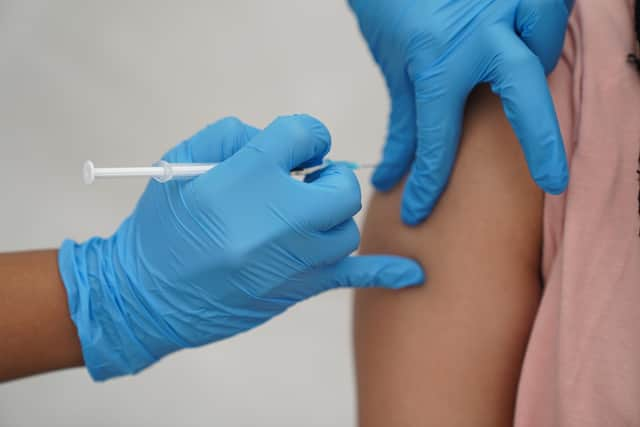Covid: Death rates indicate ‘waning protection among long-term double-vaccinated’
Death rates involving coronavirus for people in England who had their second dose at least half a year ago stood at 789.6 per 100,000 in January 2022, compared with 497.0 per 100,000 for those who had the jab between 21 days and six months ago.
The gap has widened in recent months, with the figures standing at just 15.7 and 22.6 respectively in July 2021, but 139.3 and 62.5 by October.
Advertisement
Hide AdAdvertisement
Hide Ad

The analysis has been published by the Office for National Statistics (ONS) and also shows that monthly mortality rates for deaths involving Covid-19 have been “consistently lower” since autumn 2021 for people who had received a third dose or booster at least 21 days ago, compared with unvaccinated people and those with a first or second dose.
In January 2022, the most recent month in the ONS analysis, Covid-19 mortality rates for people who had received an extra dose of vaccine at least 21 days ago stood at 102.7 per 100,000 – well below the equivalent figure for people with a second jab up to six months ago (497.0) or more than half a year earlier (789.6).
There was a “steady rise” in rates from October 2021 to January 2022 for people who had received a second dose at least 21 days ago among most age groups and overall, the ONS said.
“Overall this increase is lower for those who had had a second dose less than six months ago, compared with at least six months ago.
“This suggests that those remaining who were vaccinated a long time ago may now have limited protection, as well as possible changes in composition of the groups such as health status.”
Just over seven in 10 adults in England are estimated to have received an extra dose of Covid-19 vaccine as well as a first and second dose, according to the latest figures from NHS England.
The figure is higher among older age groups, at more than 90% of people aged 70 and over, while for 18 to 39-year-olds it currently stands at just under half (49%).
Mortality rates should not be taken as a measure of vaccine effectiveness, the ONS stressed.
Advertisement
Hide AdAdvertisement
Hide AdThe figures have been adjusted to account for differences in age and population size, but there may be other differences between the groups, such as underlying health issues, that could affect mortality rates.
